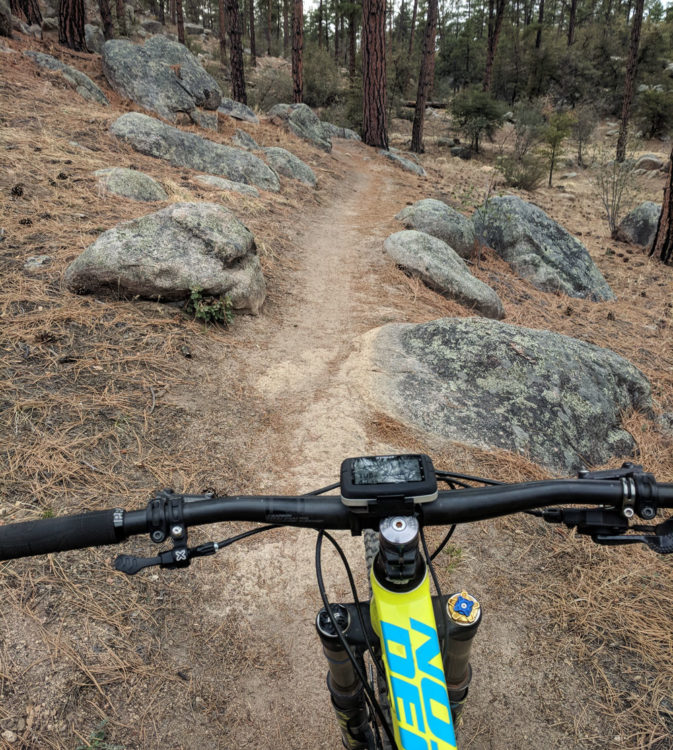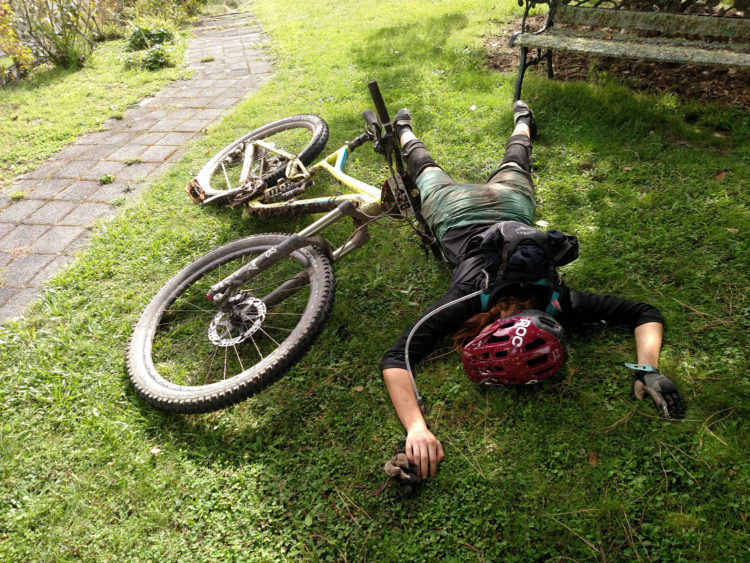How to ACTUALLY Listen to Your Body as An Athlete
11 Apr 2018
“Listen to your body.”
This is a common refrain in the world of athletics, but WHAT DOES IT MEAN AND HOW DO YOU ACTUALLY DO IT?

Proper recovery keeps ya smiling
I mean, seriously, this phrase really needs an addendum (or two or three). When people say “listen to your body” what they actually mean is something more like this:
“Listen to your body when it hurts — but not during the last thirty seconds of an interval because your legs are always going to be screaming then and that doesn’t count. Listen to your body when you’re tired — but not a normal amount of tired because you’re SUPPOSED to be good tired, just start listening when it turns into bad tired. Listen to your body when it’s sore — but only when the soreness is unusual or doesn’t go away.”
I mean, good grief, no wonder so many of us just give up on listening to our bodies entirely, and embrace a philosophy of “no pain no gain.” And no wonder so many of us end up over-trained and burnt-out.
I am no expert at this, but the past year has forced me to really stop and think about what my body is trying to tell me. Last June, I trained myself into the ground and ended up with a mysterious virus and a case of burn-out that I am still recovering from. The only reason I have been able to return to training at all this year is that I a) took several months off the bike entirely and b) completely changed the way I “listen to my body.”
So here are my practical tips for actually listening to your body:
1. If possible, train with both heart rate AND power.
Okay, this is cheating a little bit, because you’re not reeeally listening to your body, you’re listening to numbers on a little screen (I’ve been using the new Stages Cycling Dash and it is amazing), but hey, those numbers ARE your body talking and they can be damn helpful. Even if you aren’t a serious racer, a power meter could spare you a LOT of overtraining woe–in fact I have a theory that most recreational cyclists are chronically un-recovered and if more used power, more would realize this. Power meters are expensive, but so, it turns out, is getting sick.
The reason training with power is so great is that it gives you a fixed baseline. 250 watts is 250 watts is 250 watts. It doesn’t matter if you’re on a trail or a road or riding into a 90mph headwind. It’s still 250 watts. If you usually turn 250 watts with a heart rate of 160, and suddenly your heart rate is 140 (or 180), something is up. You might be getting sick, or, most likely, you’re unrecovered. You don’t have to be a coach or have a degree in exercise physiology to figure this out.
Comparing your heart rate to your power output gives you a valuable tool for knowing if you’re recovered or not, but it’s what you do with that information that counts. Last June while pre-riding for the Angel Fire Enduro Cup, I was hyper-ventilating, struggling on the climbs and feeling awful all while my HR was sitting around 130 (aka really, really low). Something was obviously up — I noted this, and then proceeded to ignore it and race anyway. Bad idea. This year, when my heartrate won’t respond, I stop workouts, cut my rides short, go home and take a nap.
Here’s the power meter that I use: Stages XT M8000 Power Meter

Stages Dash keeping me on track on a recovery ride in Prescott, AZ
2. The Relief Rule
I have a rule called “the relief rule” — if the idea of not doing something causes me genuine relief, not doing it might be the right decision.
Usually, when it comes to a difficult workout, if I envision myself not doing it — say just skivving off entirely and sitting on the couch with a book and steaming mug of coffee — I immediately feel guilty. This means it’s time to suit up and do the workout.
But if the idea of not doing it brings a flood of relief…well, that means something, and it’s probably worth listening to. I know what you’re thinking “but what if I’m just being lazy, of course not doing the workout sounds nicer, etc., etc.” But here’s the thing — you’re not lazy and neither am I. Laziness has never been my problem, and if you’re reading this blog, it probably isn’t yours either. Of course, lazing around often sounds better, but if you’re anything like me, there’s a voice in your head going “wow you will feel so shitty about yourself if you don’t at least attempt this workout.” When that voice is silent? Yikes, time to brew some coffee and sit on the couch.
This is tricky because it requires you to develop a level of trust with that voice in your head. You have to trust that you are not lazy, and developing this sort of trust takes time. The more second guessing you do, the more likely you are to convince yourself that “MUST NOT SKIP WORKOUT EVER.” So give yourself the time and space to develop this trust. Remind yourself constantly that you are motivated, that you are not lazy, that you have the best interests of your fitness and performance at heart. It’s not a foolproof rule, of course — Yes, you might skip some workouts that *probably* you could have done. But ask any coach anywhere — it’s easier to help an athlete make up for missed training than it is to dig someone out of an over-training hole.
*Of course, just because that voice is there doesn’t mean doing the workout is a great idea. You might still not be properly recovered, which is where Point 1 comes in. Heart rate doing funky stuff? Probably time to call it even when you don’t want to.
3. Stop assuming that you SHOULD feel a certain way
“I’ve only ridden twice this week so I shouldn’t be tired.”
“I just took a rest day so I should be totally recovered.”
“I only climbed 1000 feet yesterday so my legs shouldn’t be sore.”
“My heart rate is normal so I shouldn’t be feeling terrible right now.”

“I FEEL GREAT I DON’T KNOW WHAT YOU’RE TALKING ABOUT”
Here’s the reality — sometimes you need two rest days. Sometimes you need a whole rest week. Last year, by the time I dragged myself to the end of the season, I needed a rest MONTH. “Should” really has nothing to do with it. Yes, maybe your training partner doesn’t need a rest day after that interval workout, but that has nothing (LITERALLY NOTHING) to do with you. We have the tendency to over-rule what we’re actually feeling with how we think we “should” be feeling, and like Point 2, getting rid of “should” requires working on your self-trust. I’ve found a morning meditation practice to be very helpful with this, as it forces me to acknowledge how I actually feel in the present moment and to do so without (er, with minimal) judgement.
Yesterday was a rest day, but I still feel exhausted and foggy. Okay what can I do to accommodate that?
Sometimes it works the other way around, too. After a long day on the bike you might assume that you’re exhausted because DAMN YESTERDAY WAS HARD, but maybe when you check in with yourself, you’re doing okay, and you’re ready to do that gym workout after all. Spending a few minutes each morning to assess your mental, emotional and physical state as objectively as possible is key to listening to your body.
Listening to your body – I mean ACTUALLY LISTENING – is hard. It requires conscious, deliberate effort, and it’s an ongoing process. You’re never going to get it completely right. You will always have days where you over-do it, and niggles and symptoms you ignore that you really shouldn’t have ignored. This is just part of being an athlete. If we all got it right every time, we’d all be world champions. It’s not supposed to be easy — that’s what makes it fun.
Disclaimer: Some of the links in this post are affiliate links and Stages Cycling is a sponsor of mine. All opinions are, however, 100% my own.





